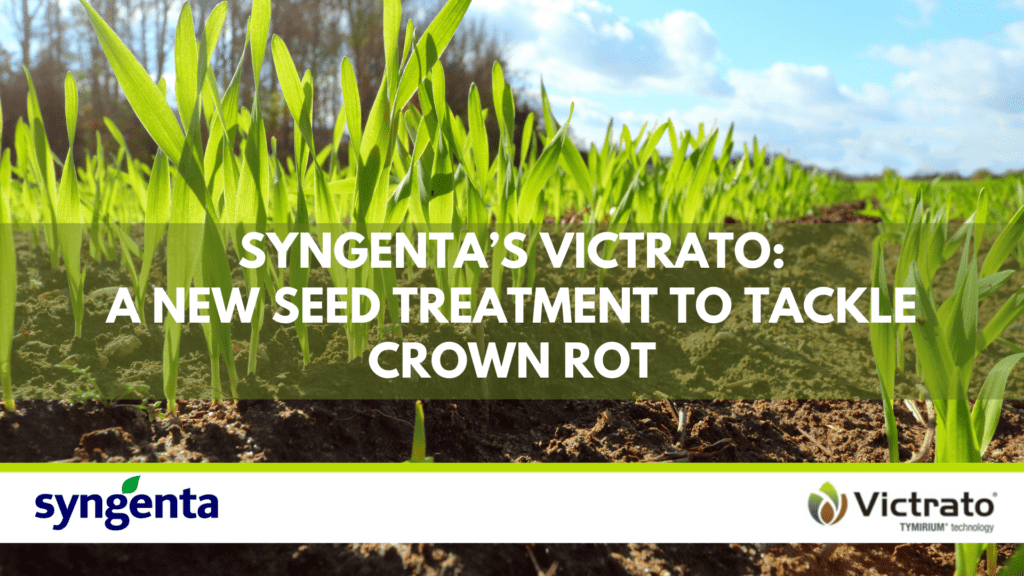Is crown rot devastating your durum yields? Finally, there’s a solution in the pipeline!
Syngenta’s Victrato is a seed treatment that will be registered to control crown rot and manage root lesion nematodes in wheat and barley. It’s currently under evaluation by the APVMA, and once it’s registered, it will be a valued tool in maximising cereal productivity in our areas.
Victrato’s active is 200g/L of Cyclobutrifluram, which is a group 7 fungicide. This means resistance may become an issue, and so care would need to be taken on subsequent fungicide use.
As crow rot infection begins early during the seedling stage, Syngenta targeted Victrato as a seed treatment option to provide lasting crop protection. Particularly in a dryer season, the presence of fusarium crown rot will have a bigger impact on crops as it restricts the plants’ ability to utilise the required water to fill grain, leading to the common visible symptoms of whiteheads and pinched grain. In trials, Victrato is showing excellent crop and seed safety and outperforms current seed treatments to reduce crown rot symptoms and increase yields. The product provides optimal soil movement and systemic activity to provide targeted protection, allowing growers to increase their returns while minimising risks.

Figure 1: Whiteheads from GRDC Crown Rot Southern Fact Sheet pdf. Whiteheads caused by crown rot can cause costly production losses as well as increased screenings and downgrades at receival depots.


Figure 2: Common symptoms of Crown Rot from Syngenta
Crown rot is proving to be a growing challenge for cereal producers and is now being found in vast areas of the wheat belt with significant production losses. Syngenta have conducted over 300 trials nationwide, showing yield improvements in 89% of trials that have utilised the product. Four out of five times the product was used, it correlated to a yield increase that provided a positive return on investment.
2023 has shown a significant build-up of crown rot inoculum, which is creating some urgency to plan accordingly for the 2024 season. Growers are being encouraged to conduct PREDICTA*B tests to determine their inoculum levels. Results can then help make decisions regarding crop and varietal choices for a more resilient integrated management approach. This can then be complimented by the new Victrato technology in the future.
As registration with the APVMA is only expected around March 2024, access to stock for the 2024 season will be limited (and obviously, subject to registration).
However, if you’re a durum grower, let us know if you are interested.
For more info on Victrato, click here.
For more info on crown rot, click here.
Equento:
Along with Victrato, Syngenta will also have a new canola seed dressing insecticide for next season, Equento Extreme. As we all know, seedling canola is appetising to a range of pests, and you feel like you need to pack your swag up and sleep in the paddock to babysit them for their first few weeks. Equento Extreme is our new step in protection; a mixture of two actives Equento (100g/L Isocycloseram – Group 30) and Cruiser 600FS (600g/L Thiamethoxam – Group 4A), it will deliver fast-acting, long-lasting protection with proven crop safety.
Equento Extreme will deliver above and below-ground protection against early-season insect pests. The new novel mode of action picks up resistant populations of Redlegged Earth mites (RLEM), making it an excellent management tool. It will also pick up aphids (including green peach and grey cabbage aphids), wireworms, bronze field beetles and suppress lucerne flea activity.
Equento will only be available via seed companies, so keep an eye out for it next year on some selected canola varieties.

